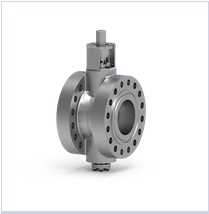Apr-2011
Reducing carbon footprint
An integrated programme of process integration techniques lowers CO2 emissions levels in refineries through energy savings
Tanmay Taraphdar
Technip KT India
Viewed : 8675
Article Summary
Conversion of crude oil into valuable fuel products primarily consists of the age-old distillation process, which is very energy intensive. On top of that, environmental regulations necessitate the production of ultra-clean fuels that require more hydrogen for hydrotreatment, which leads to more energy usage and higher CO2 emissions. At the same time, refiners face the demand of curtailing CO2 emissions to reduce their carbon footprint. These conflicting demands have put immense pressure on refiners to sustain their business with a healthy gross refinery margin (GRM) while minimising CO2 emissions. An integrated programme, looking into refinery process units and the whole refinery operation, can be adopted to address this complex issue. This programme is focused on reducing the carbon footprint without carbon capture and storage, thus avoiding the need for government legislation to make the project viable.
There are several techniques, including energy audit and the use of energy-efficient equipment and advanced process controls, which are adopted to reduce the carbon footprint in small steps. However, this article discusses methods that address energy conservation in major CO2-emitting units and equipment for significant reductions in CO2 emissions.
Refinery carbon balance
Carbon atoms in crude oil essentially end up in CO2 when fuel products from a refinery are consumed by end users. The refinery business chain starts from crude transportation, followed by refining operations and finally product transportation. Figure 1 shows the typical contribution to CO2 emissions at different stages of the refinery business chain, assuming that the refinery is located away from its crude source(s) and that refinery products are consumed within the region where the refinery is located.
It is evident that refining operations are the major contributor to CO2 emissions in the entire refinery business chain. Refinery operations essentially involve the removal of impurities from crude oil and the rearrangement of hydrocarbon molecules to produce fuels of the desired quality. A simple carbon balance for a refinery is shown in Figure 2.
The objective of the carbon balance is to establish the number of carbon atoms lost through CO2 emissions and the development of a mechanism to reduce this loss of carbon atoms. CO2 is emitted primarily from process heaters, utility generation systems (mainly steam and power), hydrogen generation units and fluid catalytic cracking (FCC) unit regenerators. Typical contributions towards CO2 emissions from these different sources in a refinery are presented in Figure 3, assuming that the refinery has an FCC unit as one of its secondary processing units.
Figure 3 shows that about 50% of emissions are from process heaters, while utility generation systems and hydrogen plant contribute about 30% and 16% respectively. FCC is an endothermic process that requires a lot of energy to perform cracking reactions. This energy is primarily supplied by burning coke associated with the catalyst, which leaves little scope for a reduction in CO2 emissions. However, there are greater opportunities for CO2 reduction in three other areas that contribute significantly to emissions. Hence, it is important to pay attention to these areas to reduce the refinery’s carbon footprint.
Integrated programme
The integrated programme starts with linear programming (LP) modelling of all refinery operations to establish the carbon footprint. Figure 4 depicts the masterplan showing different stages of the integrated programme. LP modelling should be rigorous to take care of various operating scenarios (different crude cases, product slates and so on) associated with a different set of constraints. It should also consider any future expansion plan for the refinery. It is important to finalise base cases after analysis of all these scenarios.
After establishing base cases, the next step is to look deep into the process units to apply various process optimisation techniques, such as column targeting and unit pinch analysis, to get as close to the thermodynamic minimum in terms of energy usage. These process optimisation techniques ensure a minimum hot and cold utility requirement in process units, thereby reducing the duty of process heaters, utility boilers and gas turbines. Typically, a process unit is considered to be a three-layered system. The reaction and separation system forms the innermost layer, the heat transfer system forms the middle layer, while the utility system forms the outermost layer. Separation systems, involving distillation columns mainly, are optimised using column targeting. Heat transfer and utility systems are optimised using unit pinch analysis and furnace efficiency improvement methods.
Similarly, a hydrogen generation unit, a major contributor to CO2 emissions, is optimised by applying hydrogen network management and state-of-the-art technologies to minimise CO2 emissions. The schemes and strategies that emerge by applying the various techniques and technologies mentioned need careful economic evaluation before their implementation.
The next step is to apply total site integration techniques to optimise the site’s steam power and fuel network to further reduce energy consumption vis-à-vis CO2 emissions. Finally, LP modelling of process units, utilities and the H2 network helps in the reduction of the refinery’s carbon footprint.
Scoping analysis
The purpose of scoping analysis is to identify areas where improvements with respect to CO2 emissions are possible and to quantify the extent of emissions reduction. The tools used are column targeting, unit pinch analysis, furnace efficiency improvement methods, hydrogen network management and finally total site integration. Each of these tools and their potential benefits are discussed here with case studies.
Column targeting
Typically, a distillation column consumes about 30% of all the energy used in a refinery. Optimisation of a distillation column leads to significant savings in energy. Column targeting is a powerful tool to optimise the design and operation of a distillation column. A tray-by-tray column enthalpy profile is generated from the results of a converged column simulation.
Categories:
Add your rating:
Current Rating: 4

















